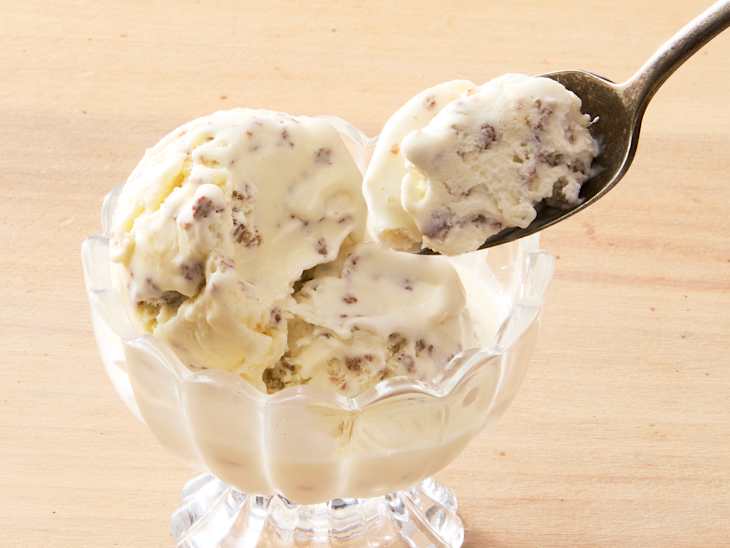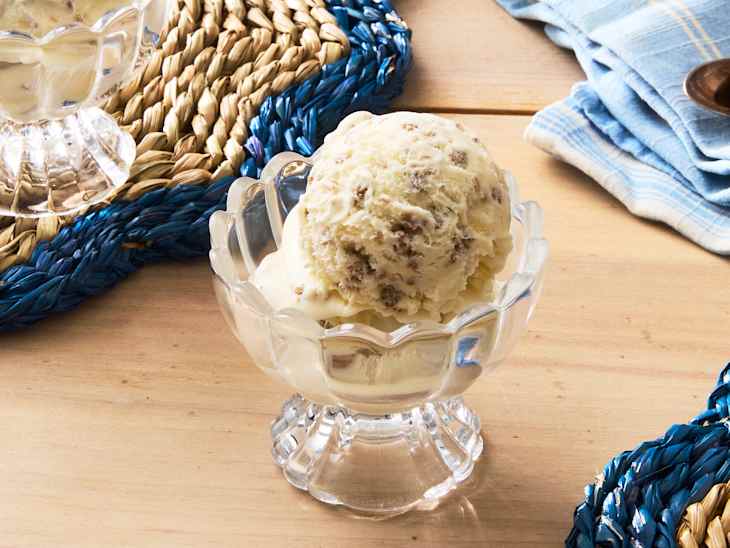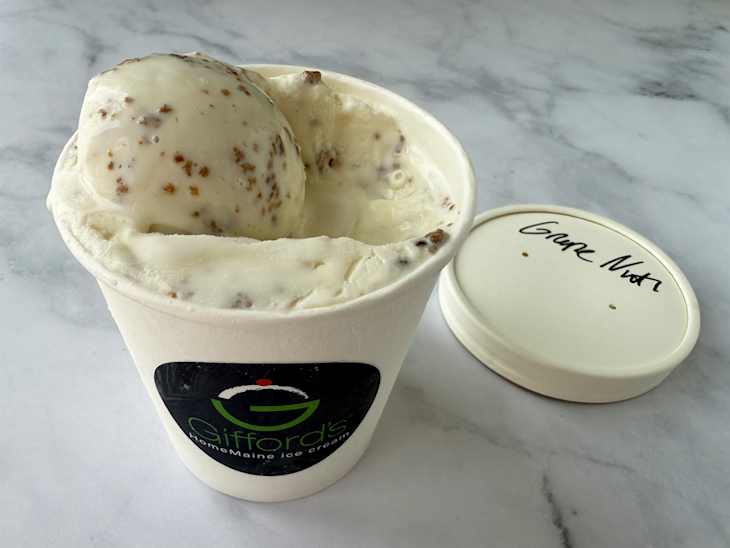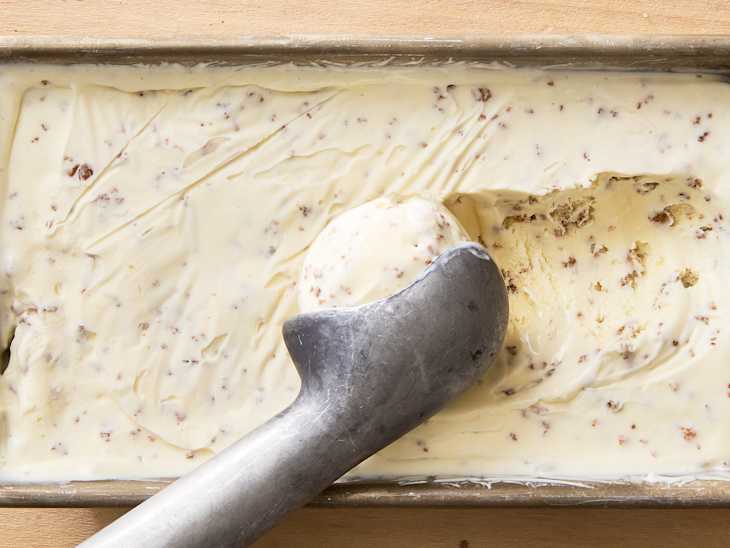

I grew up in Maine, so I was used to seeing a somewhat-unusual ice cream flavor listed among the many options at ice cream stands throughout the state: Grape-Nuts ice cream. I’ll admit that this old-fashioned, suspiciously healthy-sounding option just could not compete with chocolate-laden moose tracks (vanilla ice cream with peanut butter cups and fudge) or black raspberry chocolate chip for me, so I had never once tried it until now. I recently dug into the fascinating history of this unique flavor and discovered why it’s been an ice cream menu mainstay in New England and beyond for over a century.

What Is Grape-Nuts Ice Cream?
In case it’s been a while since you’ve picked up a box of Grape-Nuts cereal, here’s a quick primer: Grape-Nuts was invented by C. W. Post in 1897, who marketed it as a health food, and the Post company sold it as one of the earliest American packaged breakfast cereals. Today’s version is made from whole-grain wheat flour, malted barley flour, salt, and dried yeast (that’s right — no grapes and no nuts in sight). There isn’t a clear origin story for the cereal’s unusual name, given that it lacks both of these key ingredients, but one explanation claims the cereal is named for its small, pebbly nuggets, which resemble grape seeds, or grape “nuts.”
Grape-Nuts ice cream is made by simply stirring the cereal into a vanilla ice cream base after churning, where it softens slightly as the ice cream freezes. The cereal doesn’t have a strong flavor of its own, but does add some subtle malty, toasty, nutty notes. It offers a light, slightly crisp, nubbly texture in the ice cream that’s a pleasant contrast to the smooth base.

Why Grape-Nuts Cereal Is a Great Addition to Ice Cream
But how did Grape-Nuts get incorporated into ice cream in the first place? Much like the origin of the Grape-Nuts name, that story is apocryphal as well — but one claim attributes it to chef Hannah Young of Wolfville, Nova Scotia, in 1919. According to her grandson, the story goes that she ran out of fresh fruit to add to ice cream at her ice cream parlor so she stirred in some Grape-Nuts cereal instead. That same year, an ad for Grape-Nuts ice cream appeared in The Ice Cream Trade Journal. The flavor took off in Maritime Canada and spread into Maine and the rest of New England, where it remains popular today. Interestingly, it’s also a very popular flavor in Jamaica, where it can be found in just about every ice cream shop.
After picking up a pint at Gifford’s — an iconic Maine ice cream company that has been making Grape-Nuts ice cream for decades — I could totally see why this flavor has held onto such long-lasting appeal. I was apprehensive that the flavor might be a bit boring and maybe even overly savory, crunchy, or dry, but I was pleasantly surprised by how much I liked it. It’s subtle and understated compared to some of the wilder ice cream flavors out there, but was sweet, simple, and wholesome. The bits of Grape-Nuts cereal almost resembled crushed-up ice cream cones, and their irresistible chewy-yet-crisp texture kept me going back for more. Thanks to a hot tip I saw on Reddit, I also drizzled some maple syrup over my dish of Grape-Nuts ice cream for a little extra sweetness and a true Maine-themed experience.

How to Make Grape-Nuts Ice Cream at Home
Even though I live in Maine, I found it hard to track down Grape-Nuts ice cream outside of Gifford’s. There was a Grape-Nuts shortage in 2021, and perhaps its effects are still being felt! If you can’t track this unique flavor down at your local scoop shop or in the frozen food aisle, it’s easy to make it for yourself. Here’s how to do it.
- Soften ice cream. Set a pint of your favorite vanilla ice cream out on the counter and let sit until it’s softened but not melted, about 15 minutes.
- Mix with cereal. Scoop the softened ice cream into a medium bowl. Add 1/2 cup Grape-Nuts cereal and mix well until thoroughly combined.
- Freeze. Scrape the mixture into a freezer-safe airtight container. Freeze until firm, at least 2 hours and preferably overnight. The cereal will be crisp and crunchy at first, but will continue to soften the longer the ice cream stays in the freezer.